Once declared extinct, Lord Howe Island stick insects really do live
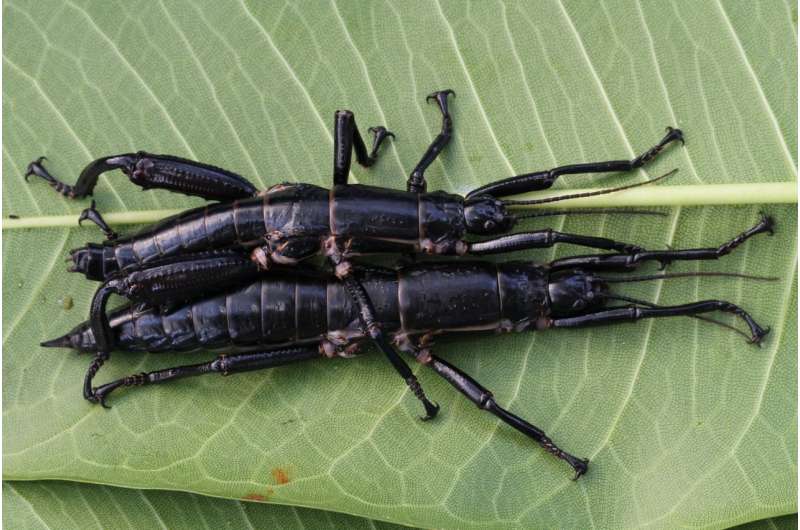
Lord Howe Island stick insects were once numerous on the tiny crescent-shaped island off the coast of Australia for which they are named. The insects, which can measure up to 6 inches in length, don't resemble sticks so much as tree lobsters, as they are also known. After ships accidentally introduced rats to the island about a century ago, the Lord Howe Island stick insects quickly disappeared. They were later declared extinct, only to be found again decades later living on Ball's Pyramid, a sheer volcanic stack about 12 miles away. But those newfound insects didn't look quite the same as older museum specimens, raising doubts about the nature of their true identity.
Now, researchers reporting in Current Biology on October 5 who have analyzed the DNA of living and dead Lord Howe Island stick insects have some good news: those rediscovered on Ball's Pyramid, which are now being bred at the Melbourne Zoo and elsewhere, really are Lord Howe Island stick insects. The findings greatly increase the likelihood that the insect's re-introduction on Lord Howe Island could be done successfully, the researchers say.
"We found what everyone hoped to find—that despite some significant morphological differences, these are indeed the same species," says Alexander Mikheyev at the Okinawa Institute of Science and Technology in Japan.
Using DNA sequence data from the Ball's Pyramid population, the researchers assembled a draft genome of the captive bred insects along with their complete mitochondrial genome. The effort revealed a massive genome, which appears to have been duplicated more than once to contain six copies of each chromosome.
The researchers also re-sequenced mitochondrial genomes from historic museum specimens collected on Lord Howe Island before the extinction event. Comparisons between living and dead insects found a divergence of less than one percent—well within the range of differences expected within a species. The findings suggest that the rediscovered populations are indeed Lord Howe Island stick insects. Dryococelus australis really has evaded extinction so far.
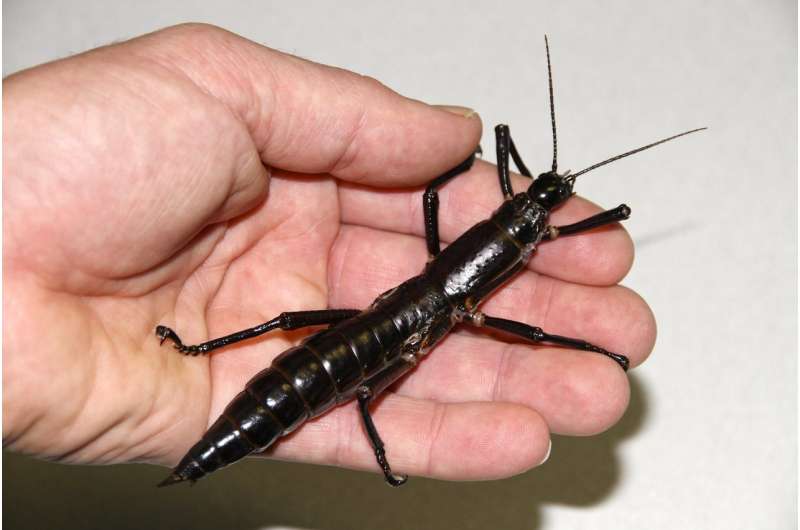
The work highlights the importance of museum collections for taxonomic validation in the context of ongoing conservation efforts, the researchers say. The findings come just as the Lord Howe Island community has backed a plan to drop poisoned grain on the island in hopes of eradicating the rats. If successful, the next chapter of the Lord Howe Island stick insect's story will take place on its ancestral island.
"The Lord Howe Island stick insect has become emblematic of the fragility of island ecosystems," Mikheyev says. "Unlike most stories involving extinction, this one gives us a unique second chance."
-
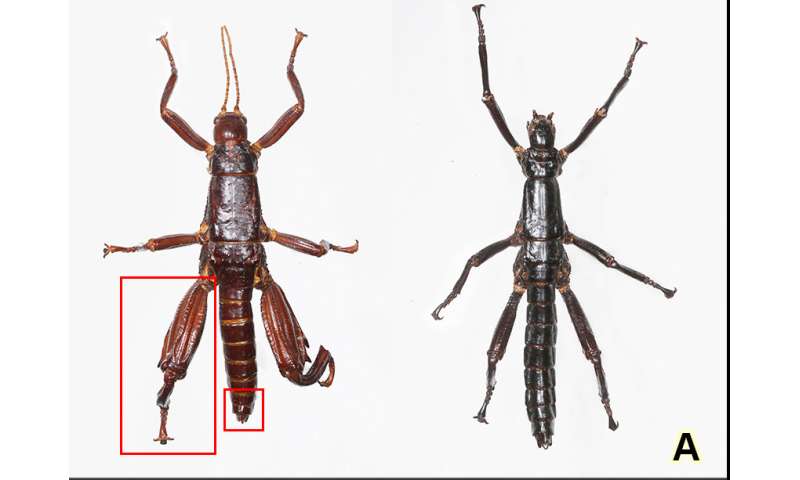
The two insects look different morphologically, which raised questions about whether they were the same species. The OIST researchers confirmed with next generation sequencing that the insects' DNA diverged by less than 1 percent. Credit: You Ning Su, CSIRO -
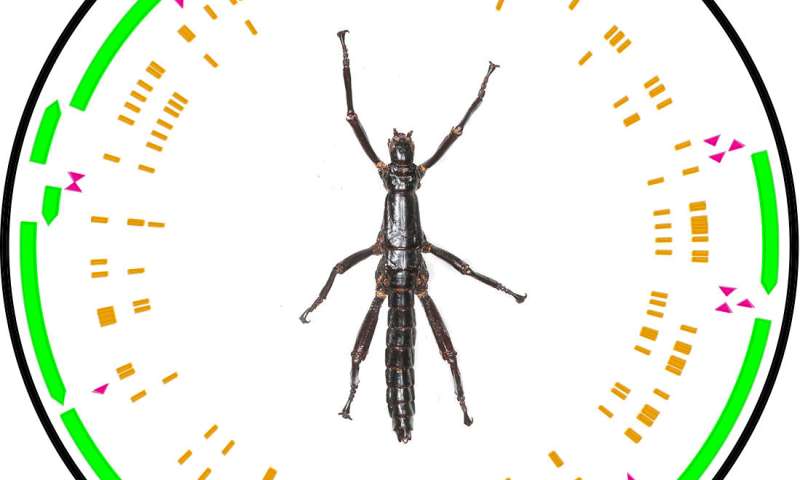
The green bars in the image represent different genes. The small orange lines show each site in which the Lord Howe Island museum specimens vary genetically from the Ball's Pyramid captive-bred insects. Credit: OIST Ecology and Evolution Unit -
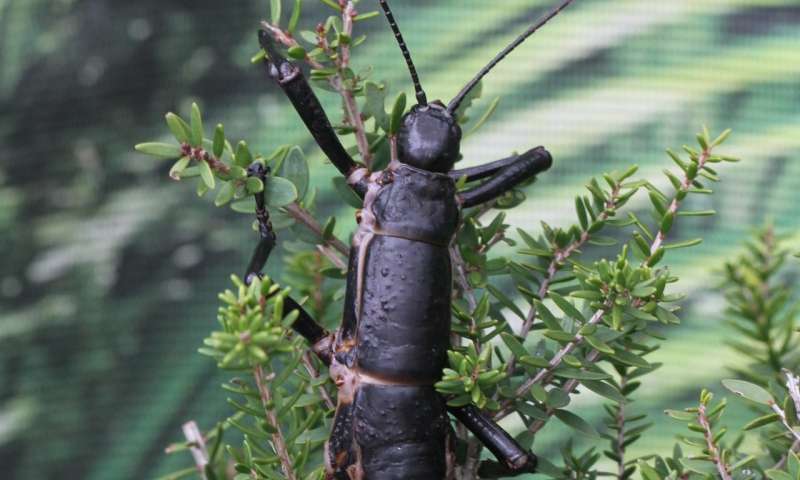
Dryococelus australis adult female on melaleuca howeana. Credit: Rohan Cleave, Melbourne Zoo, Australia
More information: Current Biology, Mikheyev et al.: "Museum Genomics Confirms that the Lord Howe Island Stick Insect Survived Extinction" www.cell.com/current-biology/f … 0960-9822(17)31098-9 , DOI: 10.1016/j.cub.2017.08.058
Journal information: Current Biology
Provided by Cell Press











.jpg)







